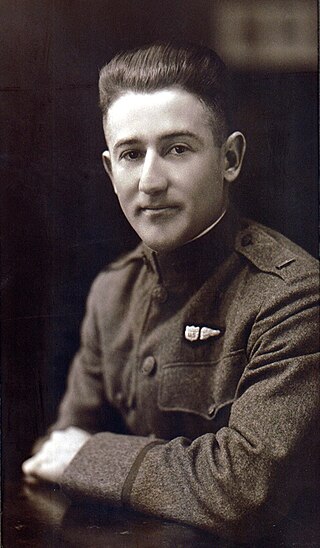
Samuel Reeves Keesler, Jr. was a member of the United States Army Air Service in World War I posthumously awarded the Citation Star for gallantry.
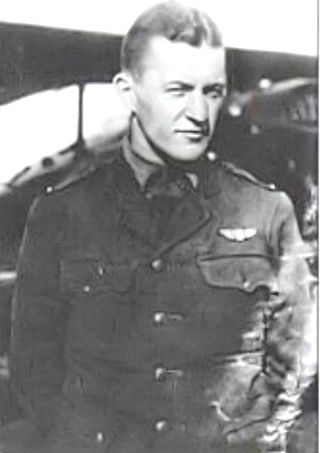
Captain Harold Robert Buckley was a World War I flying ace credited with five aerial victories.

Brigadier General Everett Richard Cook was a World War I flying ace credited with five aerial victories. During World War II, Cook became Deputy Chief of Staff for the U. S. 8th Air Force, headquartered in London, under the command of General Carl "Toohey" Spaatz.

First Lieutenant Charles Rudolph d'Olive was a World War I flying ace, credited with five aerial victories. He was the last World War I aviator to be declared an ace, in 1963.

Arthur Edmund Easterbrook was an American aviator who started his career as a World War I flying ace credited with five aerial victories. During World War II, he held several important positions in the U. S. Army Air Corps.

Lieutenant George Willard Furlow (1893–1959) was a World War I flying ace credited with five aerial victories.

Lieutenant Orville Alfred Ralston was a World War I flying ace credited with five aerial victories. He returned to service for World War II, only to die in a B-17 crash.
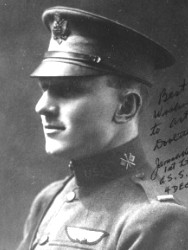
Lieutenant James Alfred Keating was an American World War I flying ace credited with six aerial victories, including four triumphs during a running battle on 9 August 1918.
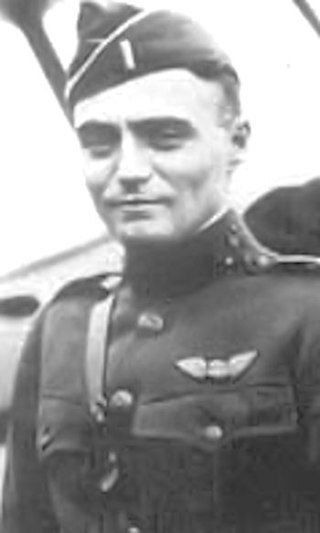
Lieutenant Jesse Orin Creech was a World War I flying ace credited with seven aerial victories. He shot down the final victory of the war for his squadron.

Captain Gorman DeFreest Larner was a World War I flying ace credited with seven aerial victories.

Lieutenant Leslie Jacob Rummell (1895-1919) was an American World War I flying ace credited with seven aerial victories.

Lieutenant Clinton Leonard Jones, Jr. was an American World War I flying ace credited with eight aerial victories.

The 91st Aero Squadron was a unit of the Air Service, United States Army that fought on the Western Front during World War I. The 91st was one of the first five American flying squadrons to reach France, arriving at Chaumont Hill 402 Aerodrome on 15 November 1917.

Lieutenant Jacques Michael Swaab was an American World War I flying ace with the 22nd Aero Squadron who was credited with ten victories. He later worked in the Hollywood film industry.
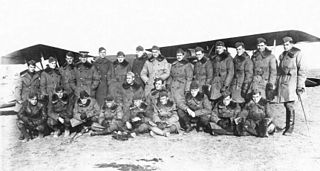
The 139th Aero Squadron was a United States Army Air Service unit that fought on the Western Front during World War I.
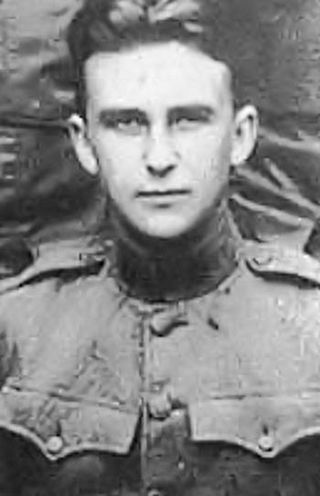
Lieutenant Howard Burdick DSC DFC was an American World War I flying ace credited with eight confirmed aerial victories. He and his son, Clinton D. Burdick, are the only known pair of father-son flying aces.
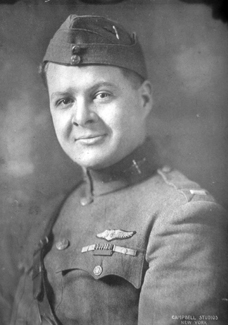
Paul Frank Baer was an American fighter pilot for the United States Army Air Service in World War I. He was credited with nine confirmed victories and seven unconfirmed victory claims, making him the first flying ace in American military aviation history.

The 22nd Aero Squadron was a United States Army Air Service unit that fought on the Western Front during World War I.

Captain Thomas Gantz Cassady was an American fighter pilot who served in both World Wars, and became a businessman during peacetime.

Second Lieutenant Frank Murchison Moore was an officer with the United States Army Air Service during the Great War. He was killed in action in the waning months of that conflict. Moore Air Force Base, northwest of Mission, Texas, was named in his honor.



















